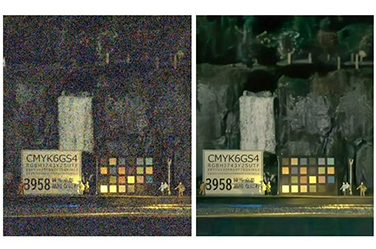

Achieving both higher image quality and shorter examination times in MRI
Technologies to improve MRI image quality
Magnetic resonance imaging (MRI) typically requires a long scan time to acquire high-definition images, which places a substantial burden on the patient. Canon is developing new technologies for acquiring high-definition images in a short scan time to achieve more accurate diagnosis.
October 16, 2023
Trade-offs in MRI
An MRI scanner, which is a type of diagnostic imaging system, uses a strong magnetic field to obtain images of the organs and blood vessels in the body. Because MRI does not involve radiation exposure, demand for MRI is growing in a wide range of fields, including diagnosis, treatment, and research.
However, compared to computed tomography (CT), which can acquire images in a relatively short scan time, MRI requires a longer scan time of around 30 minutes to acquire images of various scan planes in the body.
The longer the scan time, the more likely the patient is to move during the examination, making it difficult to obtain high-resolution images. In MRI examinations, there is a trade-off between high-resolution imaging and a short scan time. Canon has been actively developing new technologies to address this issue.
Continuously evolving technologies for achieving higher image quality
In 2019, Canon developed Advanced intelligent Clear-IQ Engine (AiCE), a noise reduction and reconstruction technology for MRI based on deep learning.*1 And in 2023, to meet increasing demand from the medical community for higher image resolution and shorter scan times, Canon introduced an MRI system equipped with Precise IQ Engine (PIQE).
- *1 Deep learning is used only during the design stage. The diagnostic imaging system itself does not have self-learning capabilities.

MRI system with PIQE technology
While AiCE employs deep learning specifically for noise reduction, PIQE focuses on further improving image quality by adding high-definition imaging functions to the technologies developed for AiCE.
PIQE can generate images with three times the resolution*2 in both the vertical and horizontal directions (nine times the total number of pixels*3), making it possible to reduce the scan time by one-third with no loss in image resolution.
- *2 Size of one pixel.
- *3 Number of pixels that make up an image.

PIQE’s noise reduction and high-definition scanning technologies improve image quality.
In addition, by minimizing the artifacts (differences from the actual image) that arise during high-definition image processing, clearer images of anatomical structures can be obtained even at the same resolution. PIQE therefore helps to avoid the trade-off between high-resolution imaging and a short scan time.
Canon will continue to listen closely to the voices of our customers in the medical community and work hard to respond to their needs. We are committed to employing our image processing and manufacturing technologies which have been developed since our founding to further promote patient-centric healthcare.




